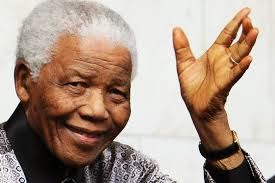Salamanca is a worldwide-known city, famous for its main landmarks, like the old University, the breathtaking Plaza Mayor, the Old Town and, of course, its magnificent cathedrals. All in all, it is a place full of history, where significant events in the past changed the course of modern life somehow. It is considered an appealing city to live in for many reasons, too many to mention right now. There will be a more propitious moment to say something about how life is in this small town, because the purpose of this post is rather different.

I intend to remark that my homeland has other treasures, unfortunately unknown to many. One of them is its beautiful province, which is formed basically by four different landscapes: The Armuña, the Arribes del Duero, the Sierras of Béjar and Francia and the Campo Charro. According to senior geographers, there are even more. However, I want to simplify them in order to get a better understanding. I am going to focus on” El Campo Charro”, a landscape which is an extended area comprising the south of Salamanca, Vitigudino, Ciudad Rodrigo and Linares de Riofrío. It is a marvelous landscape full of oaks, cork oaks and, above all, our mighty “encina” (Quercus ilex, holm oak). This unique tree is evergreen, as it never loses its leaves and gives a very singular, rich fruit called “bellota” (= acorn). The vast majority of this particular zone is a meadow where a fine, nutritive pasture essential to animal feeding grows. The perfect combination between “encinas” and meadows provides a remarkable view whenever you contemplate it, no matter what season of the year you choose. This is an area where a very specific kind of cows lives: ”The Morucha breed”.

To be honest, prior to writing something about this issue, I must admit that I am certainly not an expert. Therefore, the aim of this entry is to give sort of a general outline on what these cows are like to those who do not know them yet. Consequently, to identify them at first sight, first of all, it is important to mention that they have two different types of hair, black and grey, but both share a common characteristic, which is having a black mouth. But what strikes you most about these singular animals is their long, white upright horns with black ends. They are big-sized cows indeed, with a short neck and the whole body in an almost rectangular shape. This livestock is extremely agile, as they are able to trot, even to gallop whenever any circumstance makes them shy away. Additionally, all of them have an expressive look and graceful movements, which you can notice it, if you just take the time to make an accurate observation. Their extraordinary adaptability to extreme weather allows them to live freely in open spaces such as ours, with cold winters and hot summers. At the same time, their strong maternal instinct, together with their fertility and longevity, make these creatures almost a perfect breed.

As I have said above, these cattle live freely, not in intensive or battery farms, and eat naturally. Fundamentally, their food comes from pasture, fodder, dry cereals and acorns, creating a perfect ecosystem that contributes to developing a good environmental protection. So the meat these cows provide is undoubtedly a very healthy, full of flavour and surprisingly tender at the same time. I highly recommend tasting it to those who have not done it yet.
Nowadays, many governments are studying how to encourage people to change their eating habits, because an unhealthy diet is considered a global problem. For that reason, all of us should use quality ingredients in our meals and be aware of how bad fast food is. To me a balanced diet means eating the right amount of carbohydrates, proteins, fats, vitamins and minerals that can protect you from illness, and to have a good physical-mental health.
Finally, I should emphasize that our country has excellent and healthy products. To my mind, the Mediterranean diet is the best choice, instead of imitating bad eating habits from overseas. That is what so many people are doing unwittingly, and going along this path is plain wrong, no doubt, which will have serious consequences in the near future.
Thanks, dear fernando, for this enlightening post about our native breed, whose tender meat I always relish whenever I order it in a restaurant. I guess I'll do even more from now on!














